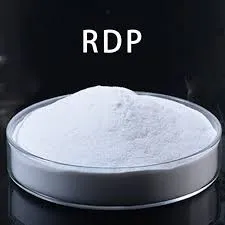
Окт . 10, 2024 16:30 Back to list
hypromellose hpmc
Understanding Hypromellose (HPMC) A Versatile Polymer in Pharmaceutical and Food Industries
Hypromellose, commonly referred to as HPMC (hydroxypropyl methylcellulose), is a semi-synthetic polymer derived from cellulose. It is extensively utilized in various industries, particularly in pharmaceuticals and food, due to its unique properties. With an increasing demand for effective and safe excipients, HPMC has gained significant attention for its versatility and efficacy in diverse applications.
What is HPMC?
HPMC is formed through the chemical modification of cellulose, which is a natural polymer found in plant cell walls. By substituting the hydroxyl groups in cellulose with hydroxypropyl and methoxy groups, HPMC exhibits enhanced solubility and functionality in both aqueous and organic solvents. This modification process results in a white, odorless powder that can form gel-like solutions upon hydration.
Applications in the Pharmaceutical Industry
One of the primary uses of HPMC is in the pharmaceutical sector, where it serves multiple functions. As an excipient, HPMC is incorporated into tablet formulations, providing controlled release properties. This is particularly beneficial for sustained-release medications, allowing for a gradual release of active ingredients over an extended period, thereby improving therapeutic efficacy and patient compliance.
Understanding Hypromellose (HPMC) A Versatile Polymer in Pharmaceutical and Food Industries
Additionally, HPMC is employed in ophthalmic preparations as a lubricating agent. Its hydrophilic nature allows it to retain moisture, making it suitable for eye drops and ointments, where it alleviates dryness and irritation.
hypromellose hpmc

Role in the Food Industry
Beyond pharmaceuticals, HPMC plays a significant role in the food industry. It is widely used as a food additive for its thickening, gelling, and emulsifying properties. HPMC is often found in gluten-free products as it helps improve texture and moisture retention, addressing the challenges faced by manufacturers in maintaining product quality without gluten.
As a stabilizer, HPMC prevents the separation of ingredients in sauces and dressings, ensuring a consistent product. Its ability to form gels at varying temperatures also makes it a suitable ingredient in creating low-fat and reduced-calorie food options, catering to the growing demand for healthier food choices.
Safety and Regulatory Aspects
HPMC is generally recognized as safe (GRAS) by the FDA and is approved for use in both food and pharmaceutical applications. Its biocompatibility and non-toxic nature make it a preferred choice among formulators. Various studies have confirmed that HPMC poses minimal risk of adverse effects, further cementing its status as a reliable ingredient across industries.
Conclusion
In summary, hypromellose (HPMC) is an invaluable polymer that has found extensive applications in both the pharmaceutical and food industries. Its ability to improve product stability, enhance textures, and provide controlled release properties makes it a critical component in formulations. As research and development continue to explore new applications for HPMC, its role in the improvement of product quality and safety will likely expand, benefiting consumers and manufacturers alike. The versatility and effectiveness of HPMC ensure its place as a staple ingredient in the quest for innovation in various fields.
-
The Widespread Application of Redispersible Powder in Construction and Building Materials
NewsMay.16,2025
-
The Widespread Application of Hpmc in the Detergent Industry
NewsMay.16,2025
-
The Main Applications of Hydroxyethyl Cellulose in Paints and Coatings
NewsMay.16,2025
-
Mortar Bonding Agent: the Key to Enhancing the Adhesion Between New and Old Mortar Layers and Between Mortar and Different Substrates
NewsMay.16,2025
-
HPMC: Application as a thickener and excipient
NewsMay.16,2025
-
Hec Cellulose Cellulose: Multi functional dispersants and high-efficiency thickeners
NewsMay.16,2025







